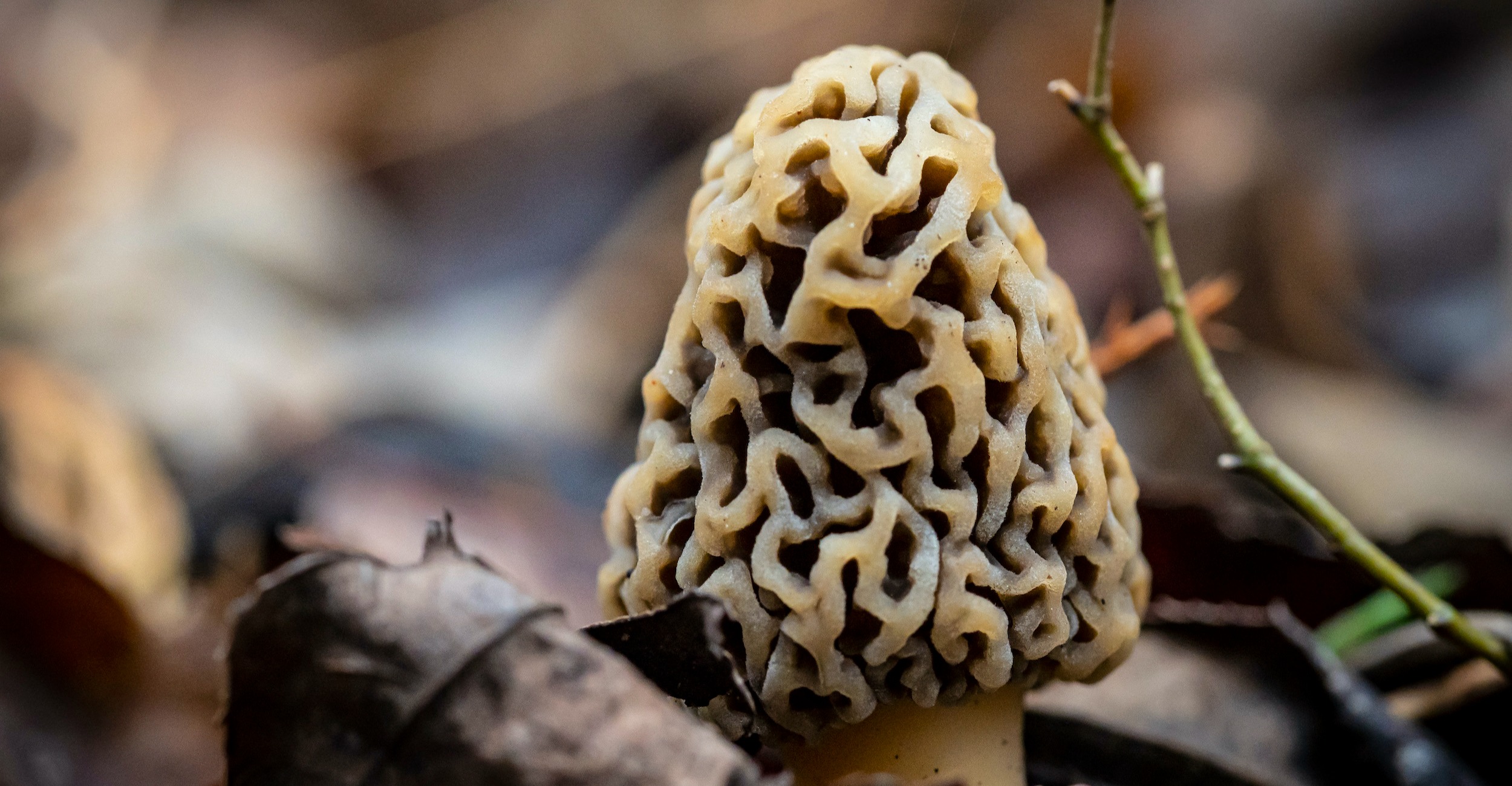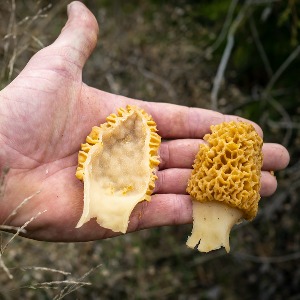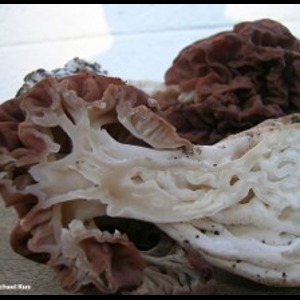
Spring highlights morel mushroom hunting
Tuesday, April 5, 2022
Media Contact: Gail Ellis | Communications Specialist, Copywriter | 405-744-9152 | gail.ellis@okstate.edu
Mushroom hunters will be out in full force during the next few weeks, and the most popular species on their radar is the morel. It’s the thrill of the chase for morel mushroom foragers, and locations are kept top secret.
Stephen Marek, associate professor of entomology and plant pathology in the Oklahoma State University Ferguson College of Agriculture, specializes in fungal biology, and he said morels are one of the safest and easiest mushrooms to hunt.
Where to look
“Most people find them in a mixed forest habitat such as a riparian area along creeks or a river because of the higher humidity,” Marek said. “In the cross timbers, they grow in areas of mixed forests of oak, hickory and eastern red cedar where there’s a lot of fallen leaves and debris.”
The leaf litter often suppresses spring grasses and forbs, making it easier to spot the morels that require a week or more to grow. Shaped like skinny pinecones or magnolia fruits with ridges that resemble a brain, they can vary in size from 2 inches to 8 inches.
“They’re not like most typical mushrooms that takes just a few days to push up out of the ground,” Marek said. “The spring climate (higher soil moistures and temperatures) induce the tree root-like mycelial network underground to form an aboveground sexual state, like the flower or fruit of a tree. The morel mycelium stays underground while the mushroom fruiting body shoots out spores.”

The underground perennial morel mycelium can build up nutritional stores in small tuber-like organs called sclerotia and will produce the most morels during a wet and warm spring. Black and yellow species of morels are identified by the color of the mushroom’s brain-like ridges, not the pits. Marek said around five species of the yellow morel and one or two black species have been documented in Oklahoma based on DNA. The small gray morels are usually yellow morels that have not yet reached maturity.
“With DNA, we know there are probably hundreds of species worldwide and 30 to 60 of the genus Morchella in the U.S.,” Marek said. “Morels are difficult to confuse with toxic mushrooms, but the false morel can potentially be toxic.”
False morels are potentially toxic
Yes, fake morels do exist, but are usually darker brown or reddish in color without easily distinguished ridges and pits on the caps. When split lengthwise, false morels in the genus Gyromitra have solid stems with contorted tissue, whereas true morels have hollow stems.
“False morels can have a volatile neurotoxin that cooks off, and if many are cooked in a small, enclosed room, the chef would be the one to become poisoned rather than the one who eats the false morel,” Marek said. “False morel poisoning symptoms resemble that of a bad stomach virus (e.g. vomiting, diarrhea, headache), and in very rare cases, this is followed by liver and kidney failure, coma and sometimes death. Some adventurous morel hunters in the U.S. consume false morels. This is NOT recommended and at the very least, false morels need to be thoroughly cooked in a very well-ventilated area.”



Even true morels carry the potential to upset stomachs, especially when undercooked. Marek advises to never eat fresh or dried morels without cooking them first. Always thoroughly cook all mushrooms intended for consumption. Once dried, they can be rehydrated and cooked or crumbled into a hot soup or gravy. Many hunters dip morels in a batter and fry or sauté them with onions or shallots in butter or oil.
“Morels are hollow, so this year I plan to try putting cream cheese inside of them and wrapping them in bacon to cook in the oven or barbecue like a stuffed chili pepper,” he said.
Old and bold, but never both
Two weeks before and after April 1 are typically ideal times for morel hunting in Oklahoma. Searching on public land is allowed, and for those who’d like to look more off the beaten path, it’s best to ask permission from the private landowner.
An early spring ritual for many, morel hunting is fun to explore before the ticks and poison ivy of the season take over.
“It’s always good to go out with someone who’s done it many years in a row who’s never gotten sick,” Marek said. “The saying in mushroom hunting is ‘there are old mushroom hunters and bold mushroom hunters, but there aren’t any that are both.’”
